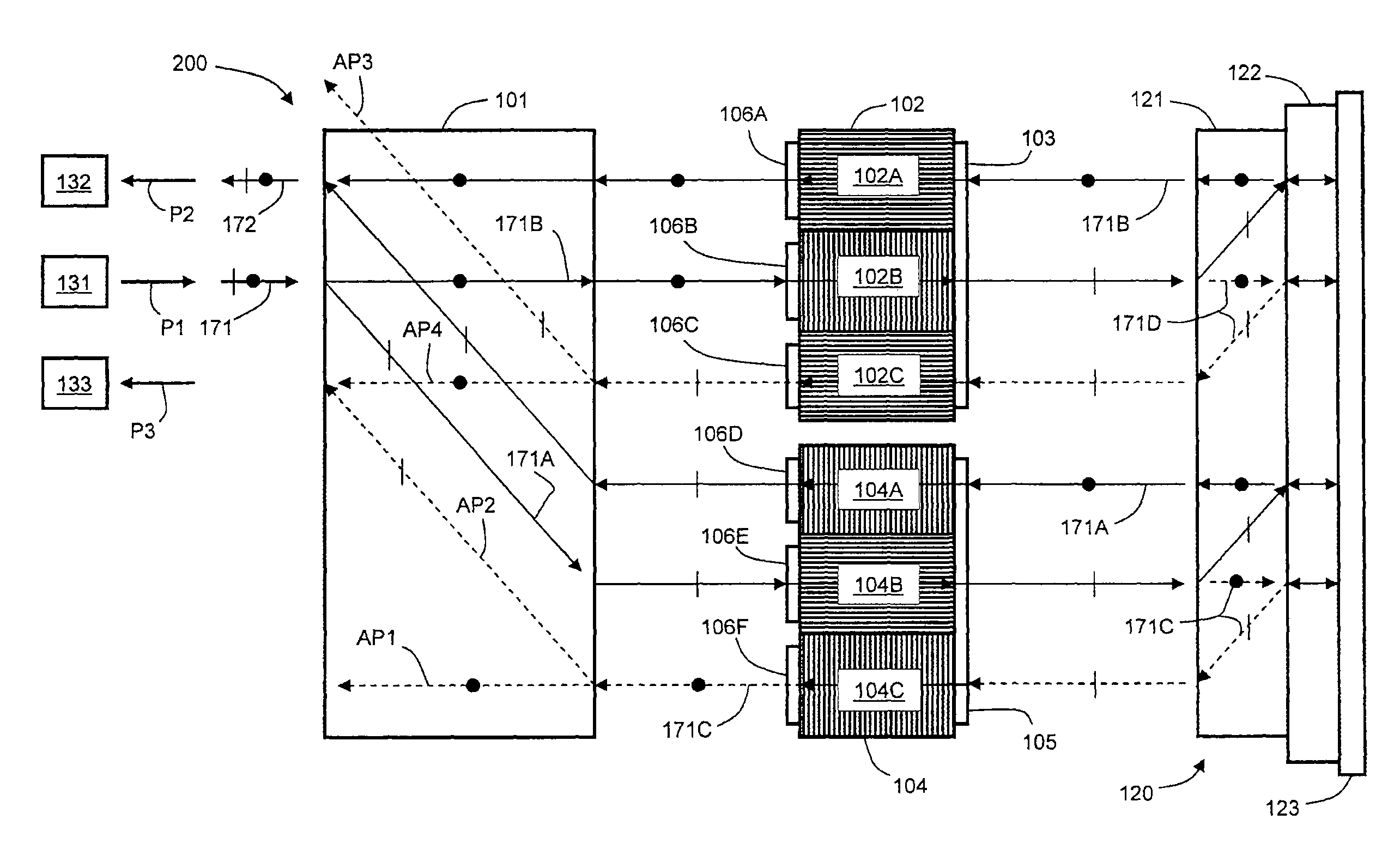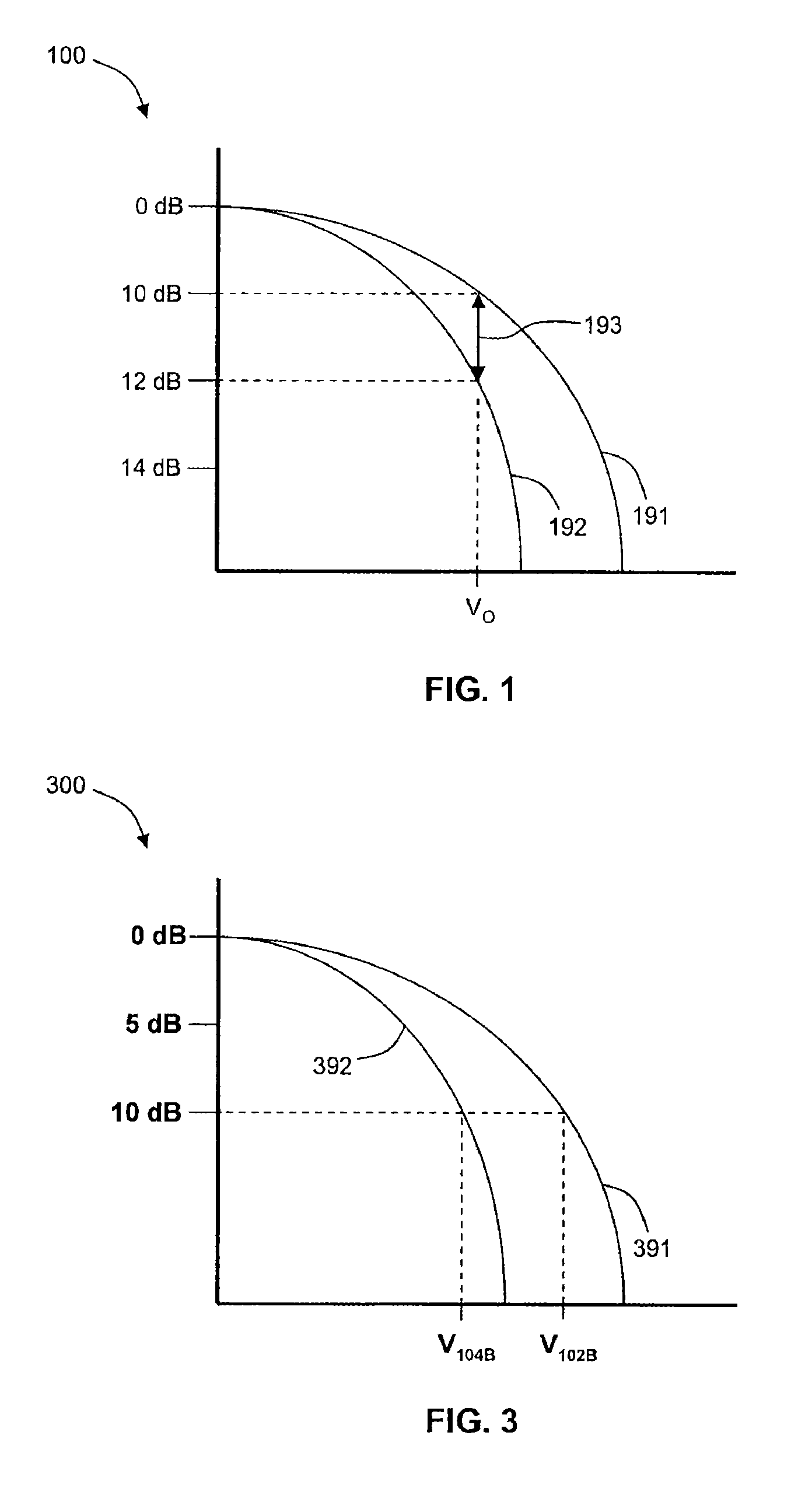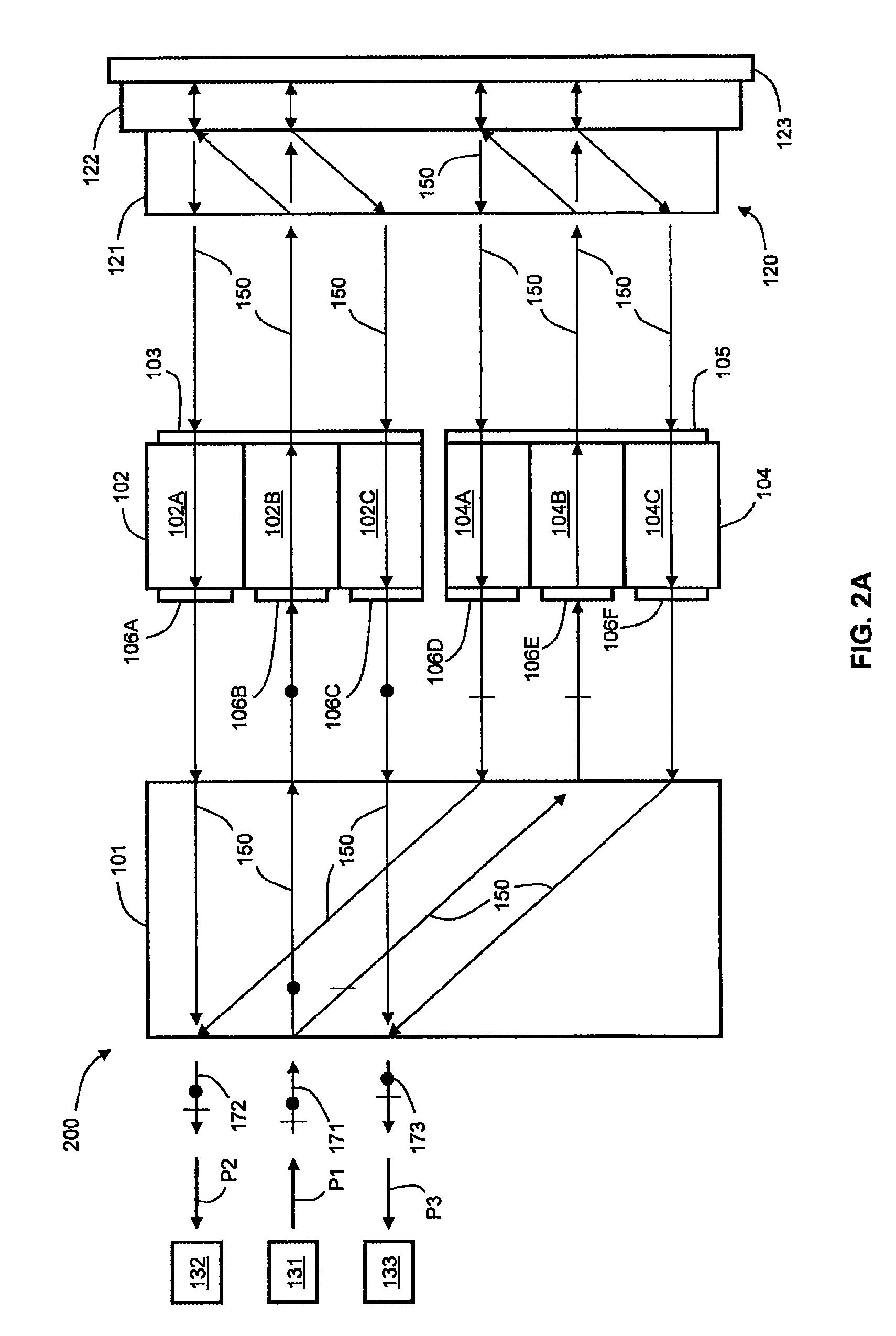Liquid crystal optical switch configured to reduce polarization dependent loss
a technology of polarization dependent loss and optical switch, which is applied in the field of optical communication systems and components, can solve the problems of polarization state, increase the likelihood of large polarization dependent loss (pdl), and uneven intensities of each channel, so as to reduce pdl and reduce pdl
- Summary
- Abstract
- Description
- Claims
- Application Information
AI Technical Summary
Benefits of technology
Problems solved by technology
Method used
Image
Examples
Embodiment Construction
Embodiments of the invention contemplate an optical switching device that performs both 1×2 switching and attenuation of an optical beam with reduced polarization dependent loss (PDL), where the optical beam has an arbitrary combination of s- and p-polarized light. The optical switching device separates the optical beam into s- and p-polarized components and uses a first liquid crystal (LC) beam-polarizing structure and a first control signal for switching and attenuation of the s-component, and a second LC beam-polarizing structure and a second control signal for switching and attenuation of the p-component, so that each polarization component is attenuated by substantially the same amount.
The optical device includes a birefringent displacer, two liquid crystal (LC) beam-polarizing structures having three subpixels each, and a polarization separating and rotating assembly. The birefringent displacer separates input light beams into s- and p-polarized components before the component...
PUM
| Property | Measurement | Unit |
|---|---|---|
| optical path | aaaaa | aaaaa |
| birefringent | aaaaa | aaaaa |
| wavelength | aaaaa | aaaaa |
Abstract
Description
Claims
Application Information
 Login to View More
Login to View More - R&D
- Intellectual Property
- Life Sciences
- Materials
- Tech Scout
- Unparalleled Data Quality
- Higher Quality Content
- 60% Fewer Hallucinations
Browse by: Latest US Patents, China's latest patents, Technical Efficacy Thesaurus, Application Domain, Technology Topic, Popular Technical Reports.
© 2025 PatSnap. All rights reserved.Legal|Privacy policy|Modern Slavery Act Transparency Statement|Sitemap|About US| Contact US: help@patsnap.com



